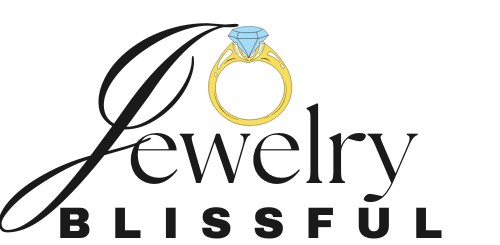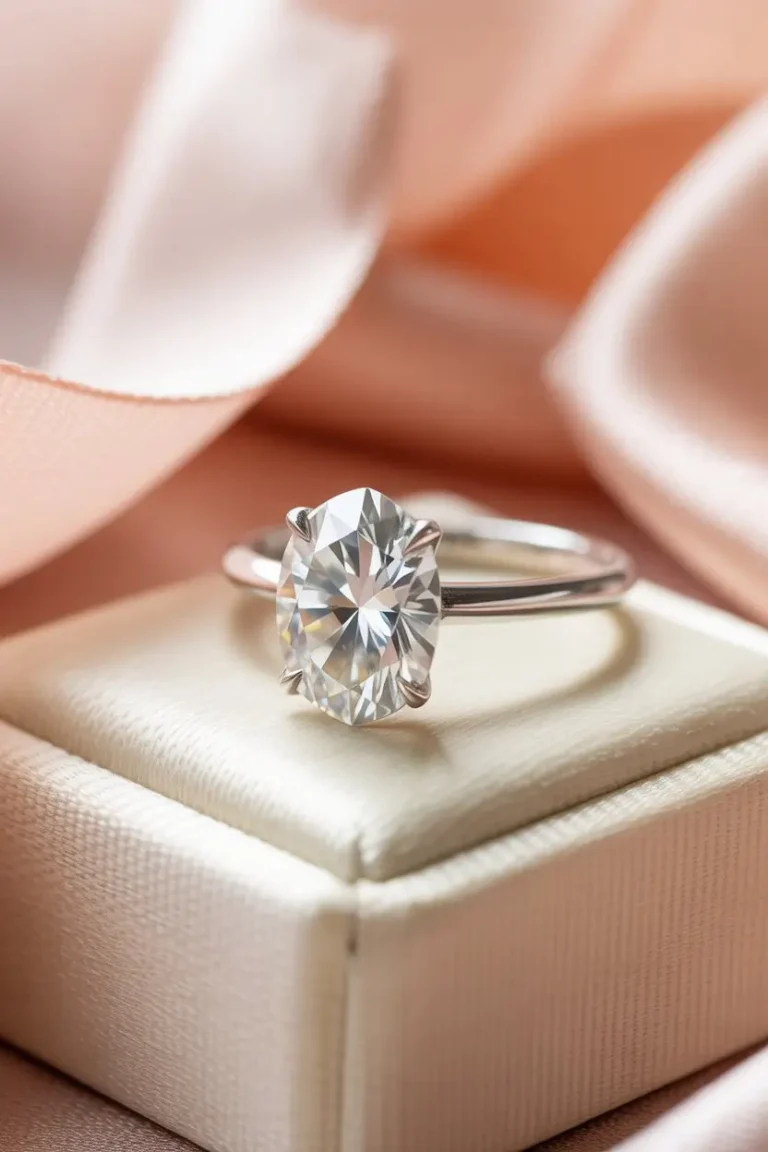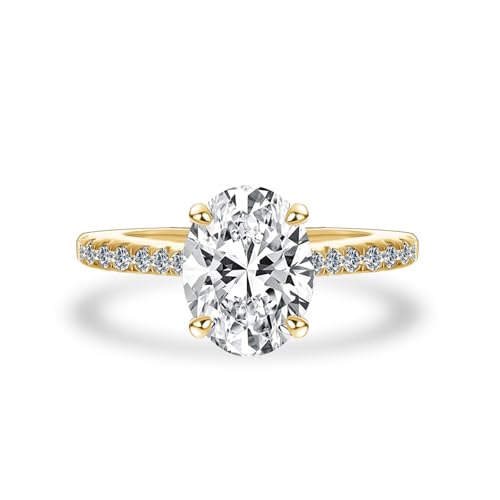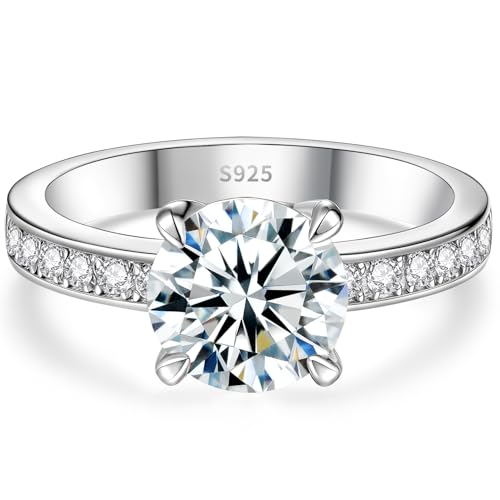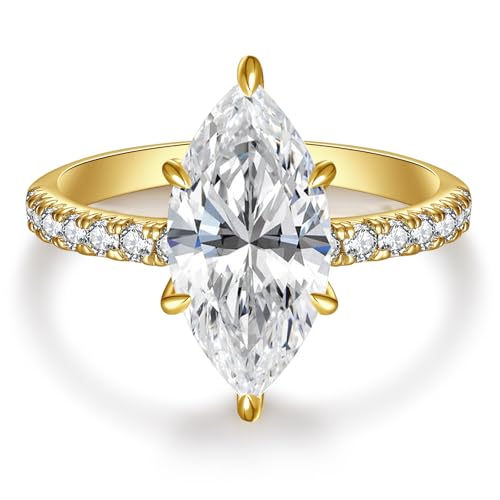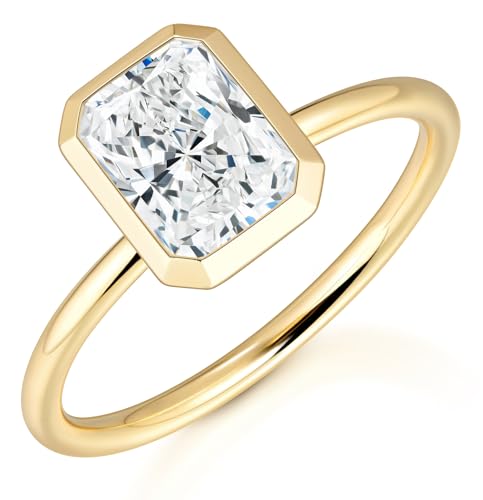Classy engagement rings make a promise that goes beyond the proposal. They nod to tradition without feeling stiff, and they feel current without chasing trends. The secret is balance. Good proportions, thoughtful materials, and restrained details come together to create something that will look right for decades.
That sense of grace is not an accident. It is design math plus craftsmanship, and a few smart choices you can make with confidence.
What gives a ring that timeless feel
A ring looks refined when the parts work together. No single element shouts, yet every choice has intention.
- Proportion: The width of the band, the size of the center stone, and the height of the setting feel tuned to each other.
- Restraint: A few well executed details beat a busy layout.
- Craft: Polished prongs, clean galleries, and symmetry you can sense from across the room.
- Comfort: Daily wear changes how you perceive elegance. A ring that sits well looks better.
Small upgrades matter. Even a 0.90 carat solitaire can feel luxe with an excellent cut, a buttery polish, and a slim, sturdy band.
Styles that age beautifully
These settings have stayed relevant for a reason. They frame the stone, flatter the hand, and pair well with wedding bands.
- Classic solitaire: Four or six prongs, a simple shank, and a center stone that does the talking. It stacks with anything.
- Three stone: A center flanked by two smaller stones, often tapered baguettes or pears. Symbolic and balanced.
- Pave band with prong-set center: A line of small diamonds along the band adds shimmer without stealing focus.
- Bezel: A thin rim of metal around the stone. Clean, secure, great for active lifestyles.
- Cathedral: Arched shoulders that lift the center slightly. Elegant side profile.
- Halo, kept delicate: A fine collar of small diamonds around the center. Choose a narrow halo and minimal gap for a graceful look.
- Size: COZITED Mrs. ring dish jewelry dish measures 4.53 ” Lx 4.53 ” W x 0.59 ” H, small size, but big enough to store je…
- Material: Crafted from great quality glazed ceramic with irregular round shape ring dish and gold trim. Well packed in a…
- Multi-Use: Keep your everyday jewelry organized. It is a great size, perfect for placing at the side of your bathroom co…
- 【Dimensions】: This monogrammed ceramic jewelry dish measures 4.75 x 4.75 inches
- 【Perfect Decor】This tray is not only a container for jewelry, bracelets, necklaces, rings, earrings, keys, but also a pe…
- 【Material】Made of lead-free, cadmium-free, high-quality ceramic.
Quick comparison of timeless settings
| Setting style | Visual effect | Security | Maintenance | Pairs well with bands |
|---|---|---|---|---|
| Four prong solitaire | Minimal, airy | Good | Simple cleaning | Straight, eternity, channel |
| Six prong solitaire | Rounder outline | Very good | Simple cleaning | Nearly any style |
| Bezel | Sleek, modern classic | Excellent | Easy to clean under warm water | Straight or contour, depends on bezel shape |
| Pavé shank + prong center | Sparkle along the finger | Good, watch prongs | Check small stones yearly | Straight bands, avoid overly tight fit |
| Cathedral | Sculptural side view | Good | Clean under-gallery often | Straight bands, sometimes slight gap |
| Delicate halo | Larger look, soft outline | Good with micro prongs | More frequent checks | Straight band if halo is flush, contour if not |
Choosing the center stone with confidence
The center stone drives presence. Cut quality sets the stage, and everything else supports it.
- Cut: Prioritize excellent cut grades for round diamonds. For fancy shapes like oval, cushion, emerald, marquise, and pear, look for crisp facet symmetry and strong light return. Sparkle and contrast matter more than a tiny bump in size.
- Color: Near colorless grades work beautifully. G to H in white metals feels bright. I to J sings in yellow or rose gold because the warm metal masks tint and adds charm.
- Clarity: Eye clean is the goal, not perfection on paper. VS2 to SI1 often delivers that clear look. Step cuts like emerald and Asscher may benefit from VS1 to VS2 since their large facets reveal more.
- Carat: Choose the size that feels balanced on the hand and in your budget, then let cut lead. A well cut 1.0 carat will often outshine a dull 1.2.
Fancy shapes can read larger on the finger. Ovals, marquise, and pears stretch the finger line. Cushions and rounds look plush and symmetrical. Emerald cuts give that mirror-like flash that feels architectural and refined.
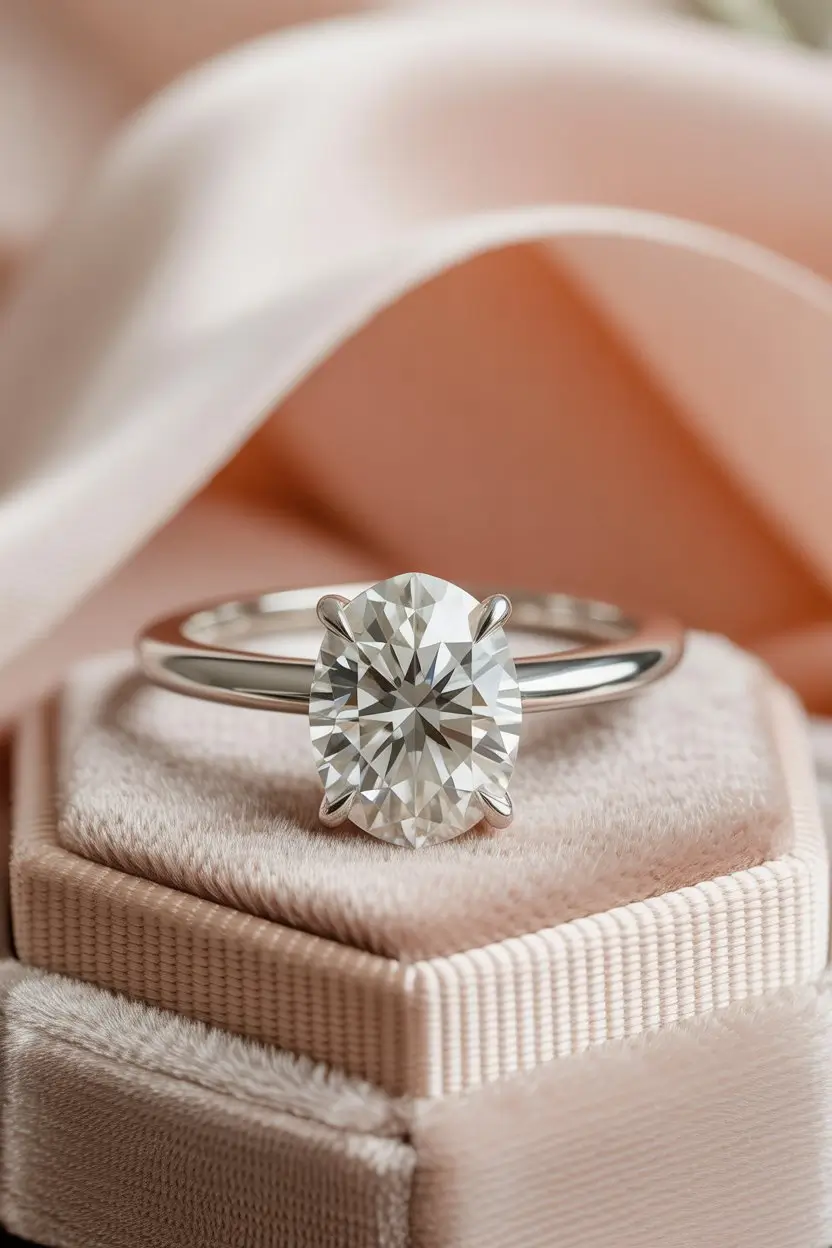
Metal matters more than many think
Color sets the mood. Weight and hardness affect wear. Care changes over time. Pick a metal that suits both style and lifestyle.
| Metal | Color tone | Wear and care | Skin notes | Styling cues |
|---|---|---|---|---|
| Platinum | Cool white, stays white | Dense, develops soft patina, resists wear well | Hypoallergenic | Pairs with bright white diamonds, luxury feel |
| 18k yellow gold | Rich yellow | Softer than platinum, easy to polish | Usually safe for skin | Timeless warmth, flatters I to J stones |
| 14k yellow gold | Slightly paler yellow | Harder than 18k, durable daily wear | Usually safe | Practical and classic |
| 18k rose gold | Warm pink | Slightly soft, holds polish well | May bother copper sensitive skin | Romantic, beautiful with oval or pear shapes |
| White gold (14k/18k) | Bright white with rhodium | Needs rhodium replating every 1 to 3 years | Nickel alloys can irritate some | Crisp look at a lower weight than platinum |
Two-tone rings can be refined if details stay slim. A platinum head on a yellow gold shank keeps prongs white against the diamond and brings warmth to the band.
Proportions that whisper class
- Band width: 1.7 to 2.2 mm feels delicate yet durable for many hands. Go thicker if you have a very active routine or want a weighty feel.
- Head height: Keep the stone low to medium so it clears a wedding band, but avoid sky high settings that catch on knitwear.
- Prongs: Four prongs feel airy on squares and ovals. Six prongs give rounds that soft, scalloped look and added security.
- Tapering: A slight taper toward the stone slims the finger and draws the eye in.
- Halo ratios: A narrow halo, about 1 mm or less, stays graceful. Thick halos can look bulky and date faster.
Think of the ring from three angles. Top view for proportion, side view for architecture, and three quarter view for how light spills through the basket.
Details that signal refinement
Small choices separate pretty from exceptional.
- Claw prongs that are neatly finished and symmetrically spaced
- A clean under-gallery with thoughtful cutouts, which helps light and cleaning
- French pavé with shared beads for sparkle and less metal, provided the stones are set securely
- Tapered baguettes that draw the eye to the center, not away from it
- A slight knife-edge or softly domed band that feels crisp without sharp edges
- A flush-fit design that allows a straight wedding band to sit close, if that matters to you
Engraving on the inside of the shank can be meaningful without changing the clean outer look.
Making a smart budget plan
Elegance is not a function of price alone. Target the parts that carry the most visual impact.
- Let cut quality lead, reduce carat slightly if needed.
- Near colorless grades look stunning in most metals.
- Prioritize eye clean clarity instead of high grades on paper.
- Consider antique or pre-owned stones for character and value.
- Slim the halo and pavé to improve longevity and reduce maintenance costs.
Lab grown diamonds offer size for cost with identical optical properties to mined diamonds. If you choose lab grown, pick a respected grading report and invest in cut and secure setting. Mined diamonds hold secondary market value better, while lab grown is typically about the look today. Both can be set with care that lasts.
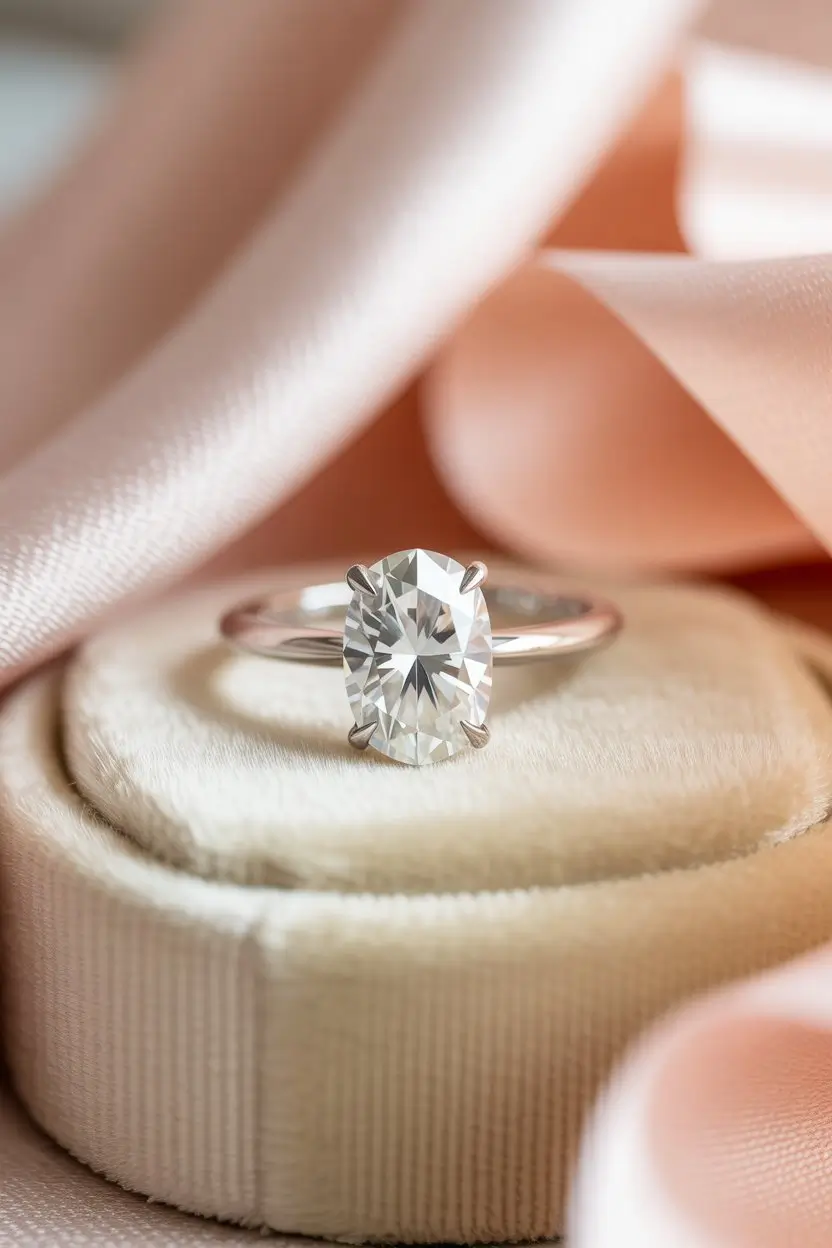
Ethics and sourcing with care
Responsible choices can be stylish too.
- Ask for traceability on mined stones, for example Canadian or Australian sources, or suppliers that audit their pipeline.
- Recycled precious metals reduce new mining impact.
- Seek jewelers that provide third party grading and clear disclosure of treatments.
- Consider antique rings or heirloom stones that carry history and lower new material demand.
No single certification solves everything. Combine reputable grading, seller transparency, and your own priorities to make a choice you feel proud of.
Comfort and daily wear
A ring that disappears into your routine will look better over time. Comfort keeps you wearing it.
- Low to medium profile for active hands
- Bezel or semi-bezel to reduce snagging
- Rounded inner band edges, often called comfort fit
- A slightly thicker base of the shank to resist bending
- Six prongs for a round if you want extra security without heaviness
If you wear gloves often, avoid overly tall cathedral bridges or very wide halos.
Sizing that really fits
Sizing is as much about knuckle shape as finger size. Temperature and time of day can move the needle.
- Measure at different times and in different temperatures
- If your knuckle is larger than your finger base, consider sizing beads or a slight euro shank to reduce spinning
- Wider bands fit tighter. Add 0.25 to 0.5 size for bands above 3 mm
- Half sizes and quarter sizes exist. Use them if the fit is close but not perfect
- Recheck fit after any major weight changes
A good fit lets the ring twist a little but not spin fully when your hand is at rest.
Care that keeps it radiant
Diamonds collect oils, and metals collect micro scratches. A bit of upkeep goes far.
- Weekly rinse: Warm water, a drop of mild dish soap, and a soft toothbrush. Pat dry with a lint free cloth.
- Monthly sparkle reset: Soak longer, brush under the basket, and rinse thoroughly.
- Ultrasonic cleaners: Safe for many settings, but be cautious with micro pavé and older pieces. Ask your jeweler first.
- Prong checks: Twice a year in store, or sooner if you notice snagging.
- White gold rhodium: Expect replate intervals of 1 to 3 years depending on wear.
- Insurance: Schedule the ring on your policy with an appraisal and photos.
Store your ring in a soft pouch or separate box slot to avoid scratches from other jewelry.
Personal touches that stay classic
Timeless does not mean generic. Subtle personalization keeps the look refined.
- An heirloom stone reset into a clean solitaire or three stone
- A hidden diamond or birthstone tucked in the bridge
- Hand engraving inside the shank with a date or phrase
- Slightly customized prong tips, petite claw or softened rounds
- A brushed or satin finish on the band, which can be repolished later if you want high shine again
Keep focal elements simple and let these details whisper.
Trends you can trust
Some modern shifts feel poised to last because they build on classic geometry.
- Ovals with slim bands, usually 1.8 to 2.0 mm
- Elongated cushions with a delicate halo
- East west emerald cuts in a low bezel, very wearable
- Round brilliant with a platinum six prong and a yellow gold shank
- Slim step-cut side stones, bullets or baguettes, around a center emerald or round
The common thread is clarity of line and restraint.
Avoiding common pitfalls
A few missteps can age a design fast or create maintenance issues.
- Bands that are too thin, under 1.6 mm, can bend or wear out quickly
- Overly tall settings that catch on everything
- Thick halos that swallow the center stone
- Pavé with large beads that snag fabrics or shed stones due to shallow seats
- Mismatched metal colors between engagement ring and wedding band that look off when stacked
- Poorly finished prongs that feel scratchy
When in doubt, ask for side profile photos and video. The side tells the truth about structure.
Smart shopping moves
A prepared shopper gets better results and better value.
- Ask for grading reports. GIA or AGS for mined diamonds, IGI or GIA for lab grown diamonds.
- Request videos in natural light and indoor light, not just studio images.
- Inspect return windows, resizing terms, and maintenance policies.
- Learn the workshop process. Hand finishing and clean polishing are visible in the final ring.
- Keep all paperwork, serial numbers, and high resolution photos for insurance.
If you are commissioning a custom piece, approve a 3D render and, when possible, a wax or resin model. Confirm the width of the band, height under the stone, and how the wedding band will sit against it.
Pairing with the wedding band
A gorgeous pair feels like a set without being identical. That takes a little planning.
- Flush fit: If you want no gap, ask for a low-profile basket or a notch that clears the center stone.
- Straight band plus solitaire: A classic match. Consider a very slim pavé or a plain band for contrast.
- Eternity vs half eternity: Eternity gives consistent sparkle, but half or three quarter bands are easier to resize.
- Channel and bar set: Clean lines, no snag risk, and a different texture next to a prong-set engagement ring.
- Mixed metals: Keep one repeated element across both rings, like matching prongs or matched finish, so the stack feels intentional.
Try on stack combinations in natural light. Stacking height and ring curvature affect comfort.
Vintage and heirloom styles that feel current
Older influences bring patina and romance without looking costume-like if you edit carefully.
- Art Deco step cuts with geometric side stones
- Mid-century solitaires with knife-edge bands
- Victorian or Edwardian milgrain used sparingly along the edges
- Old mine or old European cuts with chunky facets and warm metal
Let one period detail lead. Too many motifs can muddy the silhouette.
A simple worksheet for clarity
Use this quick checklist to focus your choices and keep the look refined.
- Center stone: Round, oval, emerald, cushion, pear, or marquise. Target cut first, then color and clarity to eye clean.
- Setting: Solitaire with 4 or 6 prongs, bezel, delicate halo, three stone with tapered sides, or pavé shank.
- Metal: Platinum for cool white, 18k or 14k yellow for warmth, rose gold for a soft blush, white gold for bright white with periodic rhodium.
- Proportions: Band 1.7 to 2.2 mm, medium head height, prong style chosen intentionally.
- Comfort: Rounded inner band, secure prongs or bezel, profile suited to your daily routine.
- Pairing plan: Decide on flush fit or slight gap, and whether you prefer a straight or contoured wedding band.
- Care plan: Cleaning routine, prong checks, and insurance details in place.
These steps stack the deck in favor of a ring that stays beautiful. Not just on day one, but for the long haul.
